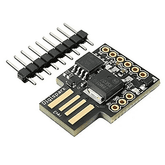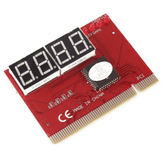SOLENOID VALVE - ALL YOU NEED TO KNOW. #TUTORIAL
Solenoids have been widely applied to relay actuators, contractors, and other automatic devices.
A common solenoid consists of coils, magnetic field, armature, which are used as power elements in solenoid valves, such as hydraulic valves, pneumatic valves.
Parts of a Solenoid Valve:
- Valve Body
- Inlet Port
- Outlet Port
- Solenoid
- Solenoid Winding
- Lead Wires
- Piston
- Spring
- Orifice
When working, the metallic core is magnetized, so the armature is moving under the influence of the electromagnetic force and can trigger the solenoid valves to realize all types of control actions. When the power goes out, it kills the magnetic fields, too, so the armature is just under the influence of the elastic force.
Solenoids are a basic component of many different devices, such as cars, mining machines, hydraulic systems, and environmental sanitary vehicles. Therefore, there are many different ways to classify solenoids such as based on their applications and their working methodology. One of the basic ways to classify solenoids is based on different power systems (the electric current that passes through the solenoid coils). Solenoids can be divided into two types: AC solenoids and DC solenoids, based on the power system.
AC vs DC Solenoids
There are a number of differences between AC and DC solenoids:
- DC solenoids are quieter and function more slowly than AC solenoids. They are also less powerful than AC solenoids.
- AC solenoids can run the risk of burning out if they malfunction and remain stuck in the open position for too long. If the solenoid stays open too long and receives too much of this first wave of maximum current, it can permanently damage the device. By contrast, DC solenoids experience no alteration in currents and do not run the risk of being damaged by the current.
- DC circuits can utilize AC solenoids without a problem, but DC solenoids cannot be used on other circuits without becoming noisy and overheated.
In this blog, we will learn how to use an AC Solenoid Valve, rated for 220V in a simple liquid cooling system. We are going to need the following things to get started:
- AC Solenoid Valve
- W1209 Digital Temperature Sensor Module
- Plug
- 12V DC Power Supply
- 4 Wires/Jumpers
- 2 Containers
We are going to control the flow of liquid across the solenoid using W1209. W1209 is a highly functional digital temperature sensor module. The module does not need any microcontroller to be used. We only need to set a threshold temperature at which actions need to be triggered. A more detailed explanation of the usage of W1209 is given here:
https://robocraze.com/blogs/post/w1209-digital-thermostat-temperature-control-switch
How will the Liquid Flow Control Work?
Make sure that the containers you use fit the inlet and outlet port of the solenoid valve.
So, now that we know how our flow control is going to work, let us make the circuit connections.
- Connect the positive and negative terminals of W1209 to their respective terminals on the 12V DC power supply
- Connect one of the wires from the plug to the K0 terminal of the temperature sensor module
- Connect one of the wires from the solenoid valve to the K1 terminal of the temperature sensor module
- Connect the other wires from the plug and the solenoid valve together; you can solder these together for better connectivity






